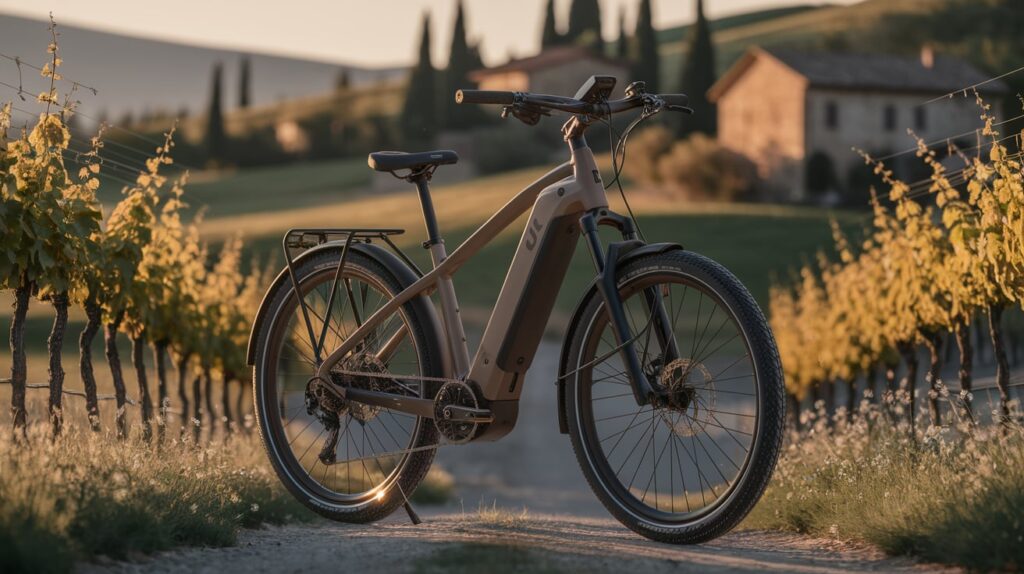Have you ever wondered why electric bikes come with such hefty price tags? As you consider making the switch to a more sustainable mode of transportation, you might find yourself questioning the cost of these modern marvels.
You’re not alone. Many potential buyers are curious about what justifies the expense of electric bikes. We’ll delve into the factors that drive up their prices. From cutting-edge technology to premium components, you’ll discover why these two-wheelers are an investment worth considering.
Stay with us to uncover the hidden value behind the price tag and decide if an electric bike is the right choice for you.

Components And Materials
Electric bikes are costly due to advanced components and materials. High-quality batteries, motors, and frames increase production costs. Durable materials like aluminum and carbon fiber ensure longevity but add to the price.
Electric bikes, often hailed as the future of commuting, come with a hefty price tag. Understanding why they are so expensive involves delving into the components and materials that make up these innovative machines. Each part, from the battery to the frame, plays a crucial role in both performance and cost. Here’s a closer look at some of the most significant contributors to the price of electric bikes.
Battery Technology
The battery is the powerhouse of an electric bike, often accounting for a significant portion of the cost. High-quality lithium-ion batteries are used to ensure long-lasting power and efficiency. These batteries are similar to those found in electric cars, designed for durability and performance. You might wonder why not use cheaper batteries. The reason is simple: better batteries mean more range and reliability. Investing in cutting-edge battery technology ensures you can travel longer distances without frequent recharges.
Motor And Drive System
The motor and drive system is another critical component that drives up the cost. Electric bikes use sophisticated motors that provide smooth and efficient power delivery. These motors are often paired with advanced drive systems that enhance the riding experience. Consider the difference between a budget e-bike and a high-end model. The latter often features a more powerful and responsive motor, offering better acceleration and hill-climbing abilities. When you pay more, you’re investing in a seamless ride that makes your daily commute or weekend adventure a pleasure.
Frame And Design
The frame and overall design of an electric bike contribute significantly to its cost. High-end bikes use lightweight materials like carbon fiber or high-grade aluminum. These materials not only reduce the weight of the bike but also enhance its strength and durability. The design process involves precision engineering to ensure optimal weight distribution and ride comfort. Think about the last time you rode a bike that felt like it was made just for you. That’s the result of thoughtful design and top-notch materials, which unfortunately come at a price. When you consider these components, it becomes clear that each plays a vital role in the cost of electric bikes. Do you think paying more for these advanced features is worth it? Your experience with an electric bike will often reflect the quality and innovation of its components.
Manufacturing Process
Electric bikes are gaining popularity for their eco-friendly benefits. Their manufacturing process is complex and contributes to their high cost. This process involves advanced engineering and strict quality assurance. Understanding these factors can help explain why these bikes are expensive.
Advanced Engineering
Electric bikes require sophisticated engineering. The integration of technology and design is crucial. Engineers work on optimizing battery performance and motor efficiency. This involves detailed research and testing. Developing lightweight materials also adds to the complexity.
Precision is key in the design of electric bikes. Engineers focus on creating reliable and durable models. This involves using innovative methods and high-quality components. Such advanced engineering raises the production cost significantly.
Quality Assurance
Every electric bike undergoes rigorous quality checks. These checks ensure safety and reliability. Manufacturers test each component thoroughly. This includes the battery, motor, and frame. Only bikes meeting strict standards are released.
Quality assurance involves multiple testing stages. Each stage focuses on different aspects. Performance tests assess speed and efficiency. Durability tests check the bike’s resilience. This meticulous process is resource-intensive.
Maintaining high standards in quality assurance is costly. It involves skilled technicians and specialized equipment. This commitment to quality adds to the overall expense of electric bikes.
Research And Development
Electric bikes are more expensive due to research and development. Creating advanced technology requires significant investment. Manufacturers aim to enhance performance and reliability. This process involves many stages and costs.
Innovation Costs
Innovation demands skilled engineers and designers. They work to create new features and improve old ones. This involves salaries, tools, and resources. Companies invest in new battery technologies and motor systems. These innovations ensure better efficiency and longer battery life.
Prototyping Expenses
Prototyping is a crucial phase in development. It involves creating and testing models. This process ensures the final product meets standards. Building prototypes requires materials and labor. Each iteration can reveal necessary changes, adding to costs.
Testing prototypes helps identify flaws and enhance designs. This ensures safety and performance. Manufacturers spend on testing facilities and equipment. These expenses contribute to the high price of electric bikes.
Regulatory Compliance
Regulatory compliance plays a significant role in the cost of electric bikes. Manufacturers must adhere to various regulations to ensure safety and environmental responsibility. These requirements add substantial costs to production, impacting retail prices. Understanding these regulations provides insight into why electric bikes carry a higher price tag.
Safety Standards
Electric bikes must meet strict safety standards before hitting the market. These standards ensure the bike’s electrical components are safe for users. Manufacturers conduct rigorous testing to comply with these regulations. Testing involves the battery, motor, and other electrical systems. Meeting safety standards often requires advanced technology and quality materials. These necessities drive up the overall production costs significantly.
Environmental Regulations
Environmental regulations aim to reduce the carbon footprint of electric bikes. They require manufacturers to use eco-friendly materials and production methods. This includes ensuring batteries are recyclable and non-toxic. Compliance with these regulations often involves additional research and development. Eco-friendly materials and processes are usually more expensive. These additional costs are reflected in the final price of the bikes.
Market Demand And Pricing
Electric bikes often carry a hefty price tag, leaving many potential buyers wondering why. One significant factor is market demand and pricing. As electric bikes become more popular, the demand for these eco-friendly vehicles has surged. Higher demand often leads to increased prices, especially when the supply struggles to keep up. Manufacturers respond to consumer interest by adjusting pricing strategies to maximize profitability.
Consumer Trends
Consumer trends play a pivotal role in shaping the pricing of electric bikes. As more people seek sustainable transportation options, electric bikes have become a trendy choice. This shift in consumer preference has driven prices upward. You might have noticed your friends and colleagues switching to electric bikes for their daily commutes. This growing popularity signals manufacturers to capitalize on the trend.
Consider your own purchasing decisions. When something is in vogue, like electric bikes, are you more inclined to pay a premium? This mindset is not uncommon, and manufacturers leverage it to set prices accordingly.
Competitive Landscape
The competitive landscape also influences electric bike prices. With numerous brands entering the market, each strives to offer unique features and superior quality. This competition often leads to innovation but also higher costs. You might find yourself comparing various models, noticing how some brands offer high-end components or advanced technology.
Think about what you value in a product. Are the extra features worth the price? This is the decision many face when considering an electric bike. Competition can drive up costs as companies invest in research and development to outperform rivals. As a consumer, your choices directly impact market dynamics.
Ultimately, the price of electric bikes isn’t just about materials and technology. It’s a reflection of consumer demand and the competitive landscape. These factors create a complex pricing strategy that influences what you pay.
Distribution And Retail
Electric bikes often carry high prices due to advanced technology and durable materials. The cost of production and distribution also plays a role in their pricing. Retailers need to cover these expenses, leading to higher prices for consumers.
Electric bikes are gaining popularity, but their price tags can surprise many potential buyers. One major factor behind the high cost is the distribution and retail process. Understanding the journey an electric bike takes from the manufacturer to your local store can shed light on why these bikes aren’t as wallet-friendly as some might hope.
Supply Chain Costs
The supply chain is a complex web involving multiple parties, each adding to the bike’s final price. Manufacturers must source high-quality components like batteries, motors, and frames from different suppliers worldwide. The logistics of transporting these parts to the assembly plant is costly, especially with fluctuating fuel prices and import duties. Consider how many hands touch a product before it reaches you. Each step—from raw material to finished bike—adds up in cost. These accumulated expenses are often passed down to the consumer, which is why you might find yourself paying more than expected.
Retail Markup
Retailers need to make a profit to stay in business, which leads to a markup on electric bikes. This markup covers the store’s operational costs, like rent, utilities, and employee wages. The retailer also needs to invest in marketing and after-sales services, which can be quite pricey. You might wonder how much the markup affects the final price. In some cases, retail markup can be as high as 40% of the bike’s price. This might seem steep, but it’s necessary for retailers to keep providing you with the latest models and excellent service. Next time you’re in a store, think about the bike’s journey. From supply chain logistics to retail markup, each step plays a crucial role in the price you pay. Would you be willing to sacrifice quality or service for a lower price? Or do you believe the convenience and innovation of electric bikes justify the cost?
Future Price Trends
Electric bikes often come with a hefty price tag due to advanced technology and high-quality materials. Specialized components like lithium-ion batteries and electric motors add to production costs. Increasing demand also influences prices, making electric bikes a significant investment.
Electric bikes are gaining popularity worldwide. Many wonder why they remain pricey. Future price trends show promising changes. Let’s explore the factors influencing these trends.
Technological Advancements
Electric bike technology is rapidly evolving. New battery designs offer longer life and efficiency. Motors are becoming lighter and more powerful. These advancements may reduce manufacturing costs. With lower production costs, prices could decrease. Research and innovation continue to drive improvements. As technology matures, affordability will likely improve.
Increasing Accessibility
Accessibility is a key factor in price trends. More manufacturers enter the market each year. Competition may lead to better pricing strategies. Greater demand encourages mass production. This often results in lower costs for consumers. Infrastructure for electric bikes is expanding. Charging stations and bike lanes are becoming common. Easier access may influence prices positively. More riders mean more opportunities for affordable options.
Frequently Asked Questions
Why Are Electric Bikes So Costly?
Electric bikes are costly due to advanced technology and high-quality components. They include powerful batteries, efficient motors, and durable frames. Manufacturing processes, research, and development add to the cost. Additionally, premium features and materials contribute to the price. These factors ensure performance, reliability, and sustainability.
Do Electric Bikes Require Expensive Maintenance?
Electric bikes generally need less maintenance than traditional bikes. However, battery replacements and motor repairs can be costly. Regular upkeep like tire checks, brake adjustments, and software updates helps avoid major expenses. Investing in a quality model reduces long-term maintenance costs.
Are Electric Bike Batteries Expensive To Replace?
Yes, replacing electric bike batteries can be expensive. Battery cost depends on type, capacity, and brand. Lithium-ion batteries, commonly used in e-bikes, are particularly costly. However, they offer long-lasting performance. Proper care, like regular charging and avoiding extreme temperatures, prolongs battery life, reducing the need for frequent replacements.
Do Electric Bikes Offer Value For Money?
Electric bikes offer significant value for money despite their high initial cost. They provide eco-friendly transportation, reducing fuel expenses and emissions. Their versatility makes them suitable for commuting and leisure. Long-term savings from reduced maintenance and fuel costs outweigh the initial investment.
Conclusion
Electric bikes cost more due to advanced technology and components. These bikes offer durable frames, powerful batteries, and efficient motors. Quality parts and innovative designs increase prices. Production costs also play a big role. Specialized manufacturing and skilled labor add expenses.
Yet, these bikes provide long-term savings. They reduce fuel costs and environmental impact. Investing in an electric bike supports a greener future. Choose wisely, balancing cost with benefits. Understand the reasons behind the price. Consider the value they bring to your life.
Electric bikes are an investment in sustainable transport.








